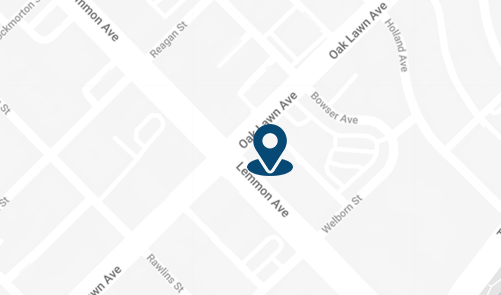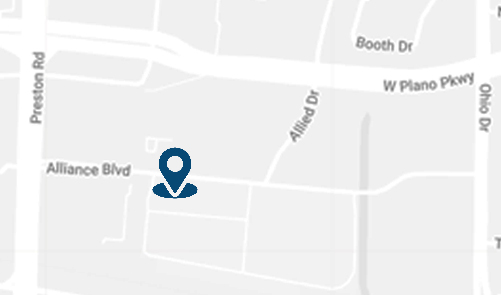By: Dr. Dev Batra | 01.29.23

Abnormal skin pigmentation can be due to many causes.
One type is sun spots or age spots, where the skin produces extra melanin in response to the sun’s UV rays. These spots are completely harmless.
Another comes from your circulatory system — specifically, the venous system that returns deoxygenated blood to your heart. If blood doesn’t flow properly, you can develop vein problems, including venous stasis dermatitis — discoloration around your lower legs and ankles. Left untreated, this can lead to skin ulcers, abscesses, and even bone infections.
At Texas Vascular Institute, interventional radiologist and varicose vein specialist Dr. Dev Batra focuses on educating his patients about their circulatory system. He also offers comprehensive treatments, providing specific solutions that bring relief.
Venous stasis dermatitis and its resulting skin pigmentation are a part of vein disease that’s not as well known as some other stages, so Dr. Batra and his team have put together this guide to help you understand what’s happening and what treatments can help.
The stages of vein disease
When blood returns to the heart from the body’s tissues, it has to fight the pull of gravity. To do that, the body uses two techniques. First, the muscles in your thighs and calves contract, forcing the blood upward. Second, the veins carrying the blood contain valves that snap shut once the blood has flowed past them, preventing backward movement.
However, if the vein walls weaken, it can damage the valves, which then can’t close completely. That allows the blood to move backward, pooling around the damaged valve. The result is what’s known as chronic venous insufficiency (CVI).
If the superficial veins around the valves engorge with blood, they form colored, ropy protrusions known as varicose veins. These may be purely a cosmetic concern, or they can cause swelling, itching, and burning. More importantly, they can lead to clots in the deep veins, a potentially life-threatening condition known as deep vein thrombosis (DVT).
If you don’t treat varicose veins, you can develop painful edema (leg swelling). Failure to address the edema can lead to venous stasis dermatitis, the second cause of skin pigmentation, changing both the color and the appearance of the skin on your legs.
The discoloration starts with orange-brown spots that arise when the pressure from the edema causes small capillaries to burst. The discoloration may progress to brown or red around your lower legs and ankles. You may also notice:
- Shiny skin
- Thickened or scaly skin
- Dryness and itchiness
And if stasis dermatitis goes untreated, edema can lead to open sores called venous ulcers forming on the lower legs and the tops of the feet. These slow-healing ulcers may become infected and form scars once they’ve healed. For diabetics, venous ulcers are a leading cause of lower-limb amputation.
Venous stasis dermatitis treatments
At Texas Vascular Institute, we offer several minimally invasive treatments to eliminate your diseased veins, removing the problem at its source. These include:
ClosureFast™
ClosureFast is an endovenous radiofrequency (RF) ablation treatment. We send radiofrequency energy into the problematic vein, forcing its walls to collapse. Blood is rerouted to other healthy veins.
VenaSeal™
We use an injectable adhesive that seals the diseased veins shut. Once again, blood is then rerouted to healthy veins.

Ultrasound-guided foam sclerotherapy
In regular sclerotherapy, we inject a sclerosant (irritant) into the vein, which causes the vein to scar and collapse. Most sclerosing agents are liquids, making it difficult to achieve an even distribution within the veins.
Instead, Dr. Batra uses ultrasound-guided sclerotherapy, which allows him to provide a more precise treatment. He first injects gas into the sclerosing agent, then injects the foam-sclerosant blend into the vein.
The gas serves as a marker, viewable with ultrasound imaging. That allows him to target the treatment area more precisely.
Microphlebectomy
When a varicose vein is close to the skin’s surface, microphlebectomy may be a good treatment option. Dr. Batra makes very small incisions (less than ¼-inch) and uses a hook to remove the veins in segments.
Are your legs and ankles painful and pigmented? You may have venous stasis dermatitis, requiring treatment from our team. Contact Texas Vascular Institute by calling 972-646-8346, or by scheduling your appointment online. We can help.
Read more blogs
Why Are My Veins Blue?
Wondering why your veins look blue under your skin? Learn the science behind vein color, how light affects what you see, and what it means for your health.
10 Warning Signs Of Poor Circulation And How To Fix It
Have you ever noticed your feet always feel cold, or your legs cramp up when walking? These could be warning signs of poor circulation, a condition that can impact your daily life and overall health.
Leg Pain Keeping You Up at Night?
Are restless, aching legs keeping you from a good night’s sleep? Nighttime leg pain can interfere with your rest, affecting your health, mood, and ability to take on daily activities. While there can be various causes, nighttime leg pain - especially when accompanied by feelings of heaviness, throbbing, or itchiness - could point to a vein issue.
WHAT OUR PATIENTS
have to say
Texas Vascular Institute always appreciates feedback from our valued patients. To date, we’re thrilled to have collected 378 reviews with an average rating of 5 out of 5 stars. Please read what others are saying about Texas Vascular Institute below, and as always, we would love to collect your feedback.
Leave a Review
Amazing Practice
I'm very particular with my Healthcare and tend to be cautious with referrals to specialists. This office is amazing from the first point of contact. Their staff are friendly, professional and highly knowledgeable. Then the Dr is just as amazing as his staff, absolutely brilliant. Office manager Jessica has this office running like a well oiled machine and does so with a smile, an air of confidence, kindness and professionalism. Love this practice!!
- Richard G.

Beyond Thankful
Dr Batra and his staff are amazing! We are so grateful to have found him. Everyone is so kind and so caring and Dr Batra explains everything so well and does procedures with excellence. Beyond thankful to be under their care!!!
- Bitsy P.

Gold Standard
This is a gold standard for how a medical practice should be run. I was promptly seen at my scheduled time, my ultrasound was thorough and I received plenty of attention and care from the staff and Dr.Batra.
- Weronika L.
INSURANCE
We accept most major insurance plans. Please contact the medical office for all insurance related questions.









8330 Meadow Rd #100
Dallas, TX 75231
For Appointments: 972-798-4710
General Inquiries: 972-646-8346

809 West Harwood Rd, Suite 101,
Hurst, TX 76054
For Appointments: 972-798-4710
General Inquiries: 972-646-8346

4716 Alliance Blvd Suite #180,
Plano, TX 75093
For Appointments: 972-798-4710
General Inquiries: 972-646-8346

